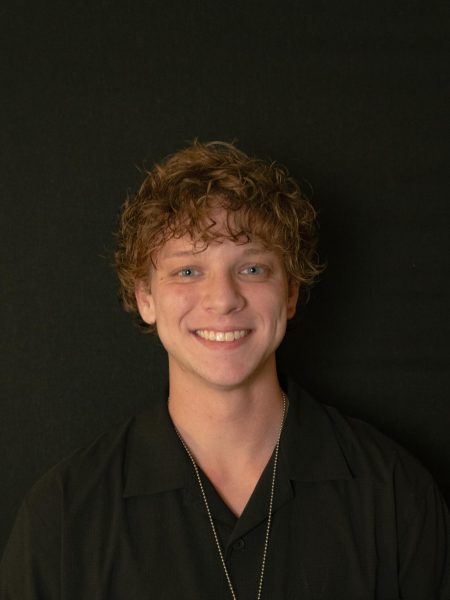Among the nation’s top 4% of research universities and a designated R1 institution, UTSA holds $140 million in research expenditures and $3 billion in direct economic impact. As a Tier One university, UTSA fosters accelerating transdisciplinary research and innovation.
Just in the past month, UTSA researchers have been progressing within their fields, from receiving awards to fuel their latest projects to publishing their latest findings. Catch up with the latest updates in Roadrunner research with The Paisano’s monthly recap.
The medicinal power of plants against brain cancer
In one of UTSA’s biology laboratories, run by Valerie Sponsel, grows a plant named Artemisia annua, commonly known as Sweet Annie.
Sponsel works with UTSA chemistry professor Francis Yoshimoto, “who is extracting the plant’s leaves for medicinal compounds. Soon, the researchers will meet with UTSA researcher Annie Lin, who will test the extracted compounds on cancer cells.”
The team is working to understand how the leaves’ extracted compounds work and were “the first to demonstrate the mechanism of one of these molecules.”
Glioblastoma (GBM) cells provided by Mitchel S. Berger, the director of the University of California San Francisco Brain Tumor Center, have allowed the researchers to test different fractional portions of the leaf extracts for cytotoxic activity. GBM “is a fast-growing and aggressive brain tumor,” and testing these fractions for toxicity against GBM cells has the potential for finding an effective medication to target tumors directly.
An interactive art installation that heals
UTSA music professor Steven Parker’s latest project emphasizes the combination of using a marching band as an expressive tool and the practice of deep listening.
Initially developed by Pauline Oliveros, deep listening is a form of sonic meditation that involves “exploring the relationships among any and all sounds whether natural or technological, intended or unintended, real, remembered or imaginary. Thought is included.”
Parker’s “inventive work draws from the historical connections between the marching band and the military.” Working with the Spirit of San Antonio band, Parker “examines themes of healing, injury and labor in football.”
Parker’s art project, Sonic Meditation for Solo Performer, takes the form of an interactive sculpture, working as an “immersive musical composition featuring an ecosystem of automated sonic sculptures made from salvaged marching band instruments.” While wearing an EEG headset, the viewer reads a silent meditation and the data is translated into a composition played by the suspended brass instruments.
“When the public is meaningfully involved in a piece, the performance is infused with a palpable electricity: the viewers contribute a layer of unpredictability and chance, the physical space of the performance shifts and participants discover new expressive skills they did not know they had,” Parker said.
Owl conservation research brings awareness to anthropogenic risks
Owls play a crucial role in our ecosystem by helping control rodent populations. Research suggests that “owls in Texas have high rates of anticoagulant rodenticides (AR) – blood thinning rat poisons – in their systems.”
UTSA integrative biology professor Jennifer Smith and her team researched a variety of anthropogenic risks that pose threats to owls in Texas.
Smith measured AR levels present in liver samples of deceased owls with the help of data from rehabilitation centers and Texas A&M’s Biodiversity Research and Teaching Collections, finding a high incidence of AR exposure, as “51% of the owls in their study [tested] positive.”
The research team promotes using alternative and nontoxic methods for rodent removal and education programs to bring “awareness of the effects of ARs or non-target wildlife such as owls.”
Nearly $2 million granted to three UTSA researchers
Meet UTSA researchers Itamar Lerner, David Restrepo and Christopher Combs, recipients of one of the National Science Foundation’s most distinguished programs, the Faculty Early Career Development Program award.
“The awards, totaling $1,984,339 in new research funding, are granted to early-career faculty who have the potential to serve as academic role models in research and education.”
Lerner’s award will assist in his research studying emergency responders to comprehend the association of stressful real-life events to sleep and performance. Lerner’s goal is to understand “which individuals are prone to develop post-traumatic stress symptoms” to assist in developing protocols that could reduce emergency responders’ sensitivity to demanding events.
Restrepo will be utilizing his funding to increase the capabilities of Architected Materials (AM) – “highly reliable (fatigue tolerant), stiff, strong and lightweight materials” that are incredibly versatile and essential within many industries. For example, surgical metallic implants used in the biomedical field for fracture repair or joint replacement increase the risk of stress-shielding – “a biomechanical phenomenon causing adaptive changes in bone strength and stiffness around metallic implants, which potentially lead to implant loosening.” Using AMs as an alternative to metal implants may reduce the associated risks. Restrepo and his team’s project “has the potential to create advanced materials for applications in aerospace, construction, transportation and medicine.”
Combs funding will fuel his research to study hypersonic flight systems – the main focus being the aircraft operation and their impact on aircraft control. The study could shift how industry and governments build these flight systems. “Combs’ award will also fund educational outreach to raise awareness of aerospace as an achievable career field among hundreds of traditionally underrepresented students.”
Neutron stars and black hole research with an international organization
UTSA assistant professor in the College of Science’s Department of Physics and Astronomy, Richard Anantua, is a co-investigator of neutron stars and black holes with the Simons Collaboration on Extreme Electrodynamics of Compact Sources (SCEECS).
“Last year, Anantua modeled and simulated plasma physics that contributed to producing the first ever image of Sagittarius A*, the supermassive black hole located in the center of the Milky Way Galaxy.”
In collaboration with the SCEECS, the UTSA chapter led by Anantua commenced at the beginning of September and is scheduled to run until 2027. The objective is to foster diversity among researchers, connect scientists, provide public outreach and “explore extreme electrodynamics through neutron stars and black holes using theory, simulation and observation.”
Anantua specializes in helping researchers understand the polarized emission around black holes.
Combating online hate with AI
Nishant Vishwamitra, professor of network security in the UTSA Department of Information Systems and Cyber Security, is developing new tools to “combat cybersecurity threats such as cyberbullying, cyber harassment and online offensiveness by creating more effective content moderation systems for social media platforms.”
Vishwamitra is looking to decrease the trauma faced on online platforms by minorities and underrepresented groups. To accomplish his goal, Vishwamitra emphasizes how cybersecurity problems, such as hate speech and misinformation, can be intensified by technology. His study aims to use Artificial Intelligence with potential to address these issues.
With a two-year awarded grant, Vishwamitra plans to spread his findings that come from this research in hopes that “large social media platforms such as Facebook and YouTube will utilize their new tools to update the platforms’ hate speech moderation systems and address hateful content in a timelier manner.”



